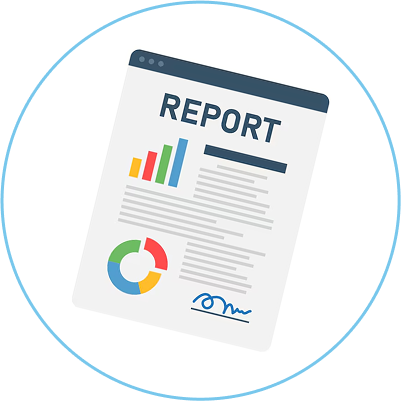Is Your Marketing Actually Working — or Just Keeping You Busy?
What is in a name? When it comes to branding and the reputability of your business, the answer is everything. Deciding on a domain name is one of the core steps in building a successful website and formulating a thriving online presence. Read on to learn all you need to know about this topic, including what they are, how they work, how to purchase them and their various extensions.
Even though you may not be aware of it, you are most likely already familiar with them. They are addresses people can use to visit your website. For example, the domain name for this site is (TBC). If your website was your home, it would be your physical address that allows visitors to arrive at the location quickly and with optimal ease.
Domain names are catchy, unique and easy to remember alternatives to IP addresses, which is what visitors to a website would need to type in if these names didn’t exist. Due to this, it is important when choosing a domain name that you decide on something simple and memorable that endures in visitors’ minds.
Every functioning website has two integral elements; a domain name and a web hosting server. A website’s domain name is linked with a respective IP address. When this URL is entered into a browser, the browser will search for the IP address using a global network of domain name system (DNS) servers. If the IP address isn’t found in one DNS server, another will be searched until it is successfully located. Once the browser has the IP address, it can then request the website’s data from its hosting server. Once the server sends this data, the website is then accessible to the user and ready for immediate use.

A Top Level Domain (TLD) is the extension at the end of a URL such as .com or .au. What form a TLD takes can tell visitors more about a website’s purpose, so when deciding on your name it is important to understand what different TLDs mean and in what circumstances they should be used.
A gTLD is the most popular and familiar extension. It is made up of 3 or more characters and anyone can register for one. Examples of gTLDs include .com, .net and .org. These three extensions have no registration restrictions.

A ccTLD is an extension specific to a country. It consists of letters based on country codes such as .au for Australia or .jp for Japan. A ccTLD is used when a website is focusing on a specific country so that international companies can differentiate their content for different locations.
An sTLD is proposed and supervised by private organisations. These entities may be government agencies, businesses or organised groups, and they always have the final say on whether or not a website qualifies for a specific sTLD. Examples of these extensions include .edu, .gov and .mil.
An SLD, below TLDs in the domain extension hierarchy, is the portion of the name to the left of the last dot. For example, in (TBC), wethinkdigital is the SLD. Oftentimes if a ccTLD is present in a URL, what would have previously been a gTLD will then become an SLD. For example, if a domain name ends in .com.au, the .com in this circumstance is an SLD as it is situated before the .au.
When deciding, you must consider branding and costs. You need a name that’s memorable, unique and within your budgeted price range. For consistency, it should correspond with your brand and business name. Domain names cannot be identical to one another, meaning only one website can be registered under a specific name at once. Additionally, available names that are popular or contain certain keywords can be very expensive. Because of this, crafting the perfect URL for your business is often a very involved process. You need to get creative, while at the same time ensuring your website is easily accessible to your users.
In most situations, it will be best to use a .com extension, as it is the most popular and easiest to remember.
Ensure your domain name is short and catchy.
Ensure it is easy to spell and preferably easy to pronounce.
Try not to use numbers or hyphens.
You’re able to check to see if your ideal domain name is available by heading to any registrar’s site. Some registrars may offer you alternate options if what you’re searching for is already taken.
You can buy a domain name from any domain registrar. To find a list of legitimate registrars, use the ICANN database. Registrars handle the reservations of these names as well as the assignment of IP addresses to the URLs. You can expect to be paying between $10 $70 a year for a domain name in Australia. Some popular registrars are:
BlueHost
GoDaddy
Google Domains
However, it is generally easier to purchase your name from your hosting provider, which are companies that enable businesses and individuals to make their websites available through the World Wide Web. Often they will allow you to buy a name directly through them, which saves you from having to worry about changing name server settings for your domain.
A domain name is a completely unique address that can be used to access a website. Having this name exponentially improves the accessibility, memorability and credibility of your website. Learning all you can about this subject will make your website more successful in the long run.
To learn more about domain names or for assistance choosing or purchasing one, visit our website today.